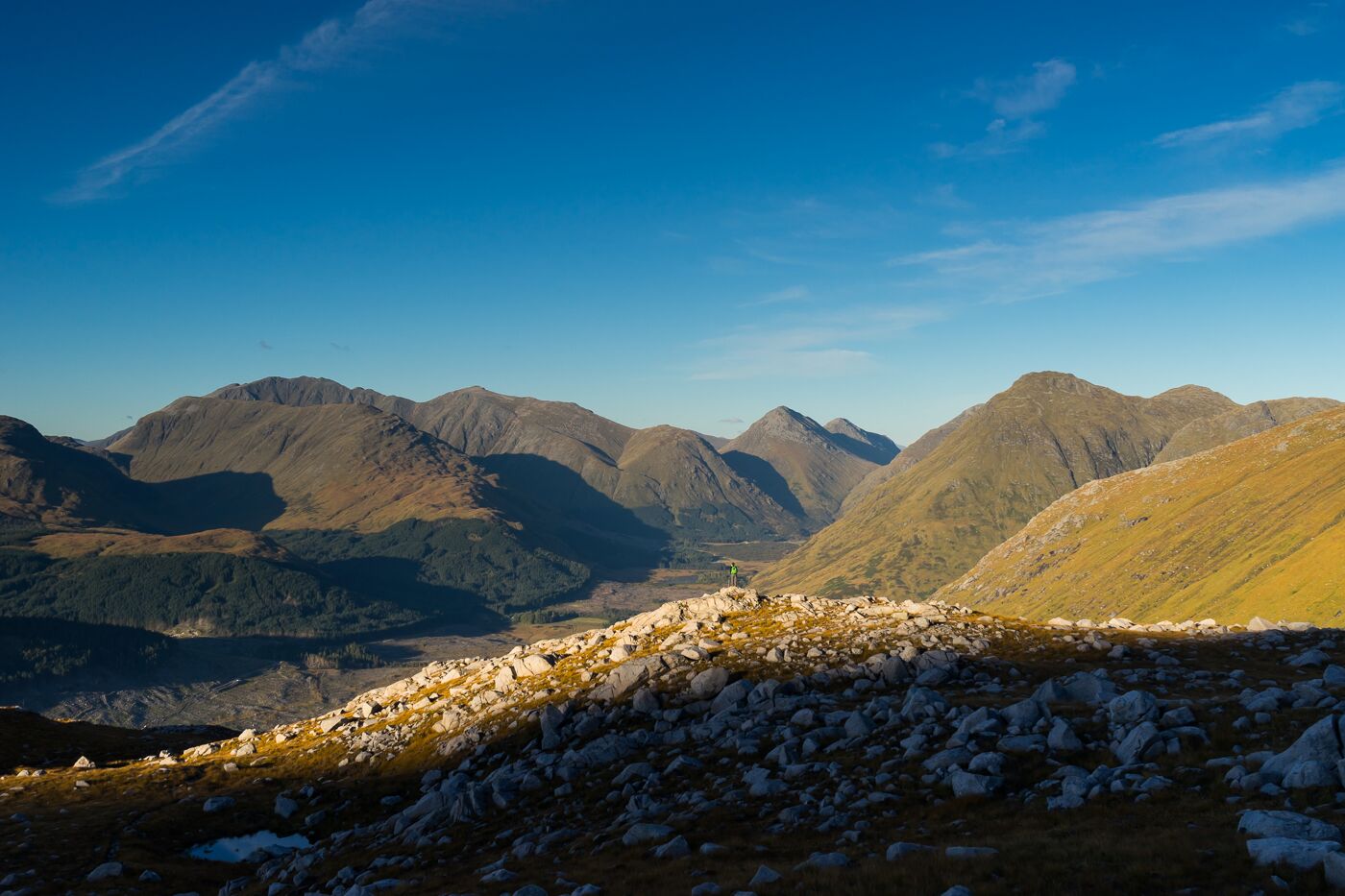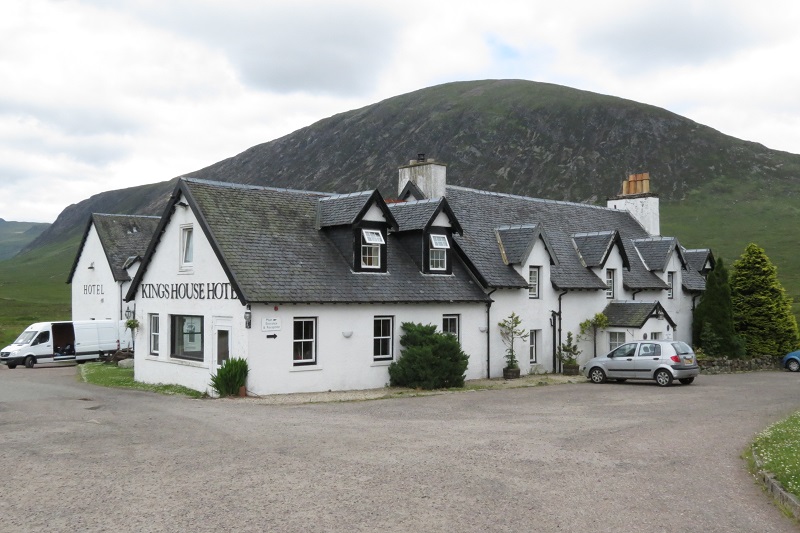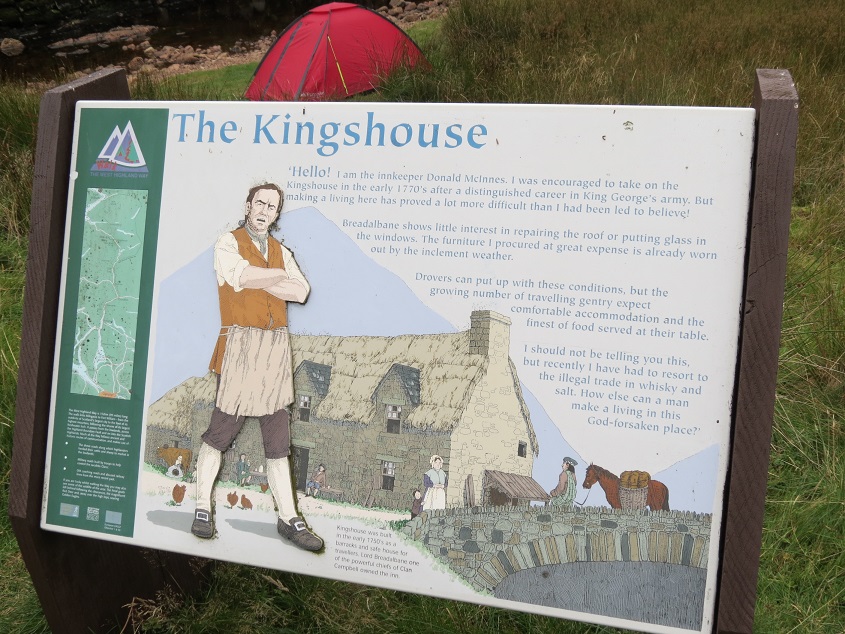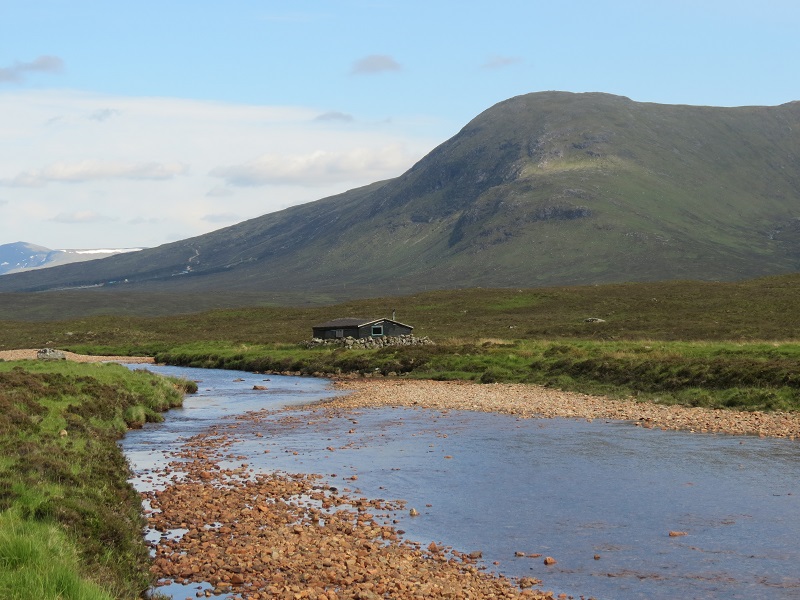
Last week the Herald reported figures from Trip Advisor showing that a trip through Glen Coe and other unnamed parts of the Highlands was rated as THE top visitor attraction in Scotland. The central importance of landscape and cultural history to tourism, not to mention our own physical and mental well-being, is well researched. Despite this, the powers that be are allowing inappropriate and badly designed developments throughout the Highlands with Glen Coe and Glen Etive now facing desecration. Parkswatch normally concerns itself only with considering issues within existing National Parks but Glen Coe and Glen Etive are so important, and indeed have long been identified as an area that would benefit from becoming a National Park, that I am going to break that rule with two posts.
The demolition of the Kingshouse

Earlier this year Highland Council consented to the redevelopment of the Kingshouse by Black Corries Estate Management Ltd despite 39 objections. The planning report argued that only the core of the old building had any historical worth- it was de-listed in 1985 – and allowed the rest to be demolished. Whether the new development will look better and blend into the landscape as well as the old Kingshouse is a moot point.

Whether sticking a modern looking extension onto an old building – there are uncanny parallels with the new Cairngorms National Park headquarters (see here) – works is also a moot point.
The justification given in the planning report, which appear to have been accepted by the Committee which made the decision, were:
“Due to the wide expanse of the National Scenic Area……………..it is not considered that the redevelopment of this site will affect the character of the wider National Scenic Area”
and
“This area, although with a remote feel, is well used and visited……………….”
The converse argument used in planning is that when an area is not well frequented, no-one will be bothered by a development. Either way anything goes.
Amazingly, Scottish Natural Heritage claimed in their response on the landscape impacts of this development that this development would not adversely affect the integrity of the National Scenic Area. This, widely thought one of the most beautiful places in Scotland. On this logic, its hard to see why any building could not be justified anywhere.
Besides their inadequate evaluation of the landscape impact of the development, the planners completely ignored the fact that the extension of the Kingshouse over the years was itself an important part of the cultural history of Scotland, with the Inn for example featuring for example in Patrick McGill’s brilliant autobiography, Children of the Dead End.

More recently the climbing community had played a particularly important part in that history with the hotel being run by climbers for a time.
For many people, from walkers of the West Highland Way arriving after the tramp around Rannoch Moor, to those climbing on the Buachaille, the Kingshouse had a special place in their memories. Among mine are camping there for a week in near constant rain trying to climb classic routes – I have an old photo somewhere of climbing underwater up a waterfall on one of the pitches in the Chasm and remember hitching down the glen with a candle to climb Crypt Route as we had no head torches – going into the bar every evening to dry out, begging for food from the kitchen and my climbing mate coolly walking into one of the bathrooms in the hotel one evening for a long soak! Its not just the buildings and scenery that have been destroyed but part of our cultural memory too.
The Highlands continue to be cleared and whoever owns the land has all the power.
The new access track to the Glen Coe ski area

The journey up over Rannoch Moor, whether by road on the A82 or by foot along the West Highland Way, and then gently down to Glen Coe is one of the greatest in Scotland, a scenic route if ever there was one, with the transition from the wide open moor to the confines of Glen Coe a memorable experience. Add to that the massacre, which gives a particular cultural twist to the landscape experience, and its not surprising Glen Coe is such a visitor attraction. Highland Council however have seriously damaged the whole experience, both through the redevelopment of the Kingshouse and through their approval of a new/enlarged access track up to the White Corries ski area.

Most of the ski infrastructure on Meall a Bhuridh is hidden from view from below, both from the West Highland Way and A82. While the plantation which shelters the large parking area is fairly ugly in itself it does help conceal the even uglier car park and the ski lift was difficult to see from afar. While there was and is plenty of scope for improvement low down, the ski centre provided a pretty good example of how to minimise the landscape impact of ski developments up the hill.
It has also provided a great example, in contrast to Cairngorm, of how to diversify a ski business from the construction of downhill mountain bike tracks to the camping pods by the carpark. When it came to a new ski lift it was faced with a choice, either to install this by helicopter or create a new access track. The costs were similar and the ski centre applied to the Council for planning permission for a track on the basis it would make installation of ski infrastructure cheaper in future.
Despite objections from Mountaineering Scotland, Ramblers Scotland, the Wild Land Group and North East Mountain Trust Council Officers approved the track under delegated powers in 2016 – just as happens in the Loch Lomond and Trossachs National Park. I believe this was wrong. Developments that impact on important landscapes should be decided at Committee level and Highland Council’s scheme of delegation needs to change.
While there had been a small track here previously, the proposal was to extend the track significantly and broaden it. Again SNH, after initial objections, came to the conclusion that the track could be designed in a way so that it would not affect the integrity of the National Scenic Area.

Unfortunately, in doing so, SNH ignored its own good practice guidance which recommends that tracks should be no more than 14 degrees maximum. The track is far too steep in places and will erode.
While I have a lot of sympathy for the operators of Glen Coe, its a far better place to ski now than Cairngorm, has received far less subsidy and they appear committed to improving facilities our public authorities should never have allowed them to do so at the expense of the landscape. The Glen Coe ski area had developed since the first ski lifts were installed without the need for a permanent access track. At Aonach Mor there a deliberate decision was taken to avoid constructing a road/track up from the bottom station and everything was done by helicopter. The same happened with the Coire na Ciste development – all the chairlift/ski tow infrastructure was put in by helicopter. Decades later the regulating bodies have forgotten the lessons learnt in earlier times…… but now, when technology is better than ever before, somehow a track is necessary.
Instead of bending over to allow the development to happen, Highland Council and SNH should have put the landscape first and then made the argument that if Glen Coe had been subsidised like Cairngorm there would have been no need for this track and all future infrastructure in the ski area should be brought in by helicopter. They still do this in many places in the Alps and Pyrenees, so why not Scotland?
Perhaps if Glen Coe had been designated a National Park different decision might have been made in both these cases. Given the record of our two existing National Parks, however, I don’t believe that designation in itself would address the issues. That is why the focus of Parkswatch is on pushing for our National Parks to fulfil the aspirations people originally had for them rather than arguing for new ones. We still, however, need to find some way to stop the desecration of Scotland’s landscape. With the current proposal to develop 7 new hydro schemes in Glen Etive, the subject of my next post, the need to reform our planning system to give far more weight to landscape and wild land, whether in a National Park or not, is becoming every more urgent.
Postscript
In response to this post I received the following email from Andy Meldrum, owner and Managing Director of Glencoe Mountain, which I am pleased to publish with his permission.
“I really just wanted to introduce myself and provide a little more information on
the thinking behind the new track at Glencoe Mountain Resort. The article you have
written is well balanced but doesn’t necessarily have the whole picture. While there
was a financial element in the decision making process to build a track rather than
use helicopters it was not the only consideration. In fact the main consideration
was in trying to reduce and prevent erosion on the front of the mountain. From the
very earliest days of skiing at Glencoe vehicles (piste machines, diggers, tracked
vehicles) have been driven up onto the plateau, initially following the old military
road and then the weasel track. However once the old military road was given a
protected status then vehicles began taking a more direct route up the front of the
mountain. The problem with this was that the tracks of the vehicles became water
channels and eroded out meaning that over the last 40 years or so a number of different
routes were created. This led to multiple scarring and lots of erosion.With a large
amount of construction about to take place – new chairlift, replacement garage,
replacement plateau cafe and within the next 10 years the replacement of all other
lifts as many of them are now 40+ years old and reaching the end of there life it was
felt that one well managed track would reduce the impact and erosion on the front of
the mountain. As part of the track build we have also been re-instating sections of
these old tracks which are most visible. The quality of the re-instating work by the
contractors has been very good and we have our bike track team working with them to
build stone arches around the culvert pipes. Once the vegetation gets a chance to
grow back up again we are confident that the track will blend into the environment
pretty well. However I do appreciate at the moment as with all construction projects
it looks much worse than it will in a few weeks time once the vegetation has re-taken.
Would be happy to discuss either on the phone or in person.”
I think this is incredibly positive. We are now in correspondence and I have agreed to meet.
In the interests of fairness it should be pointed out that the access track construction at the ski centre is required to get a TechnoAlpin snowfactory from the carpark to the plateau. The ski centre has pointed out that the snowfactory is necessary to ensure skiing/boarding off the Coire Pollach tow when natural snow is in short supply…mitigating the financial impact of poor snow winters like 2016/17. Even the most powerful Chinook helicopter could not lift this piece of kit up onto the mountain.
you know we will fight this as we fought against and lost over the Culloden development but on February 10th as we normally commemorate the massacre this will also be a demonstration this time we will prevent this is this the Highland council again?